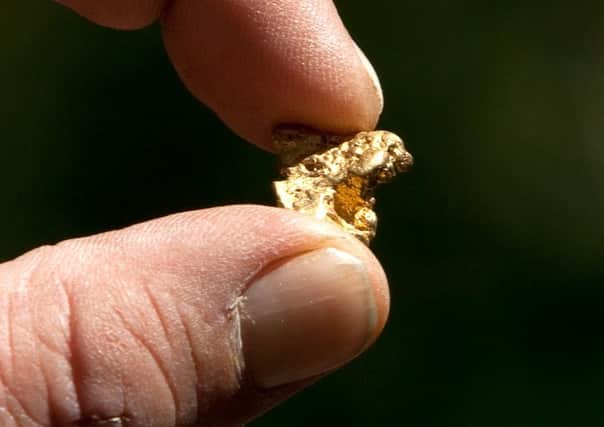Scientists create gold sheet a million times thinner than fingernail


Scientists have created the world’s thinnest version of gold. Researchers at the University of Leeds measured the thickness of the precious metal to be 0.47 nanometres, or just two atoms thick.
The thinnest unsupported gold ever created, it comprises just two layers of atoms sitting on top of one another – the material is regarded as 2D.
Advertisement
Hide AdAdvertisement
Hide AdAll atoms are surface atoms – there are no “bulk” atoms hidden beneath the surface.
Researchers say the material could have wide-scale applications in the medical device and electronics industries – and also as a catalyst to speed up chemical reactions in a range of industrial processes.
Tests show that the ultra-thin gold is ten times more efficient as a catalytic substrate than the currently used gold nanoparticles. These are 3D materials with the majority of atoms residing in the bulk rather than at the surface.
The new material could also form the basis of artificial enzymes that could be applied in rapid, point-of-care medical diagnostic tests and in water purification systems, researchers say.
A study in Advanced Science journal sets out the creation of the ultra-thin metal.
Lead author, Dr Sunjie Ye, from Leeds’ molecular and nanoscale physics group, said: “This work amounts to a landmark achievement.
“Not only does it open up the possibility that gold can be used more efficiently in existing technologies, it is providing a route which would allow material scientists to develop other 2D metals. This method could innovate nanomaterial manufacturing.”
Synthesising the gold nanosheet takes place in an aqueous solution and starts with chloroauric acid, an inorganic substance that contains gold. It is reduced to its metallic form in the presence of a confinement agent – a chemical that encourages the gold to form as a sheet.
Advertisement
Hide AdAdvertisement
Hide AdBecause of the gold’s nanoscale dimensions, it appears green in water – and given its shape, the researchers describe it as gold nanoseaweed.
The flakes are also flexible, meaning they could form the basis of electronic components for bendable screens, electronic inks and transparent conducting displays.
Professor Stephen Evans, head of Leeds’ molecular and nanoscale research group, thinks there will inevitably be comparisons made between the 2D gold and the very first 2D material ever created – graphene.
He said: “With graphene, people have thought that it could be good for electronics or for transparent coatings – or as carbon nanotubes that could make an elevator to take us into space because of its super strength.
“I think with 2D gold we have got some very definite ideas about where it could be used, particularly in catalytic reactions and enzymatic reactions.
“We know it will be more effective than existing technologies – so we have something that we believe people will be interested in developing with us.”